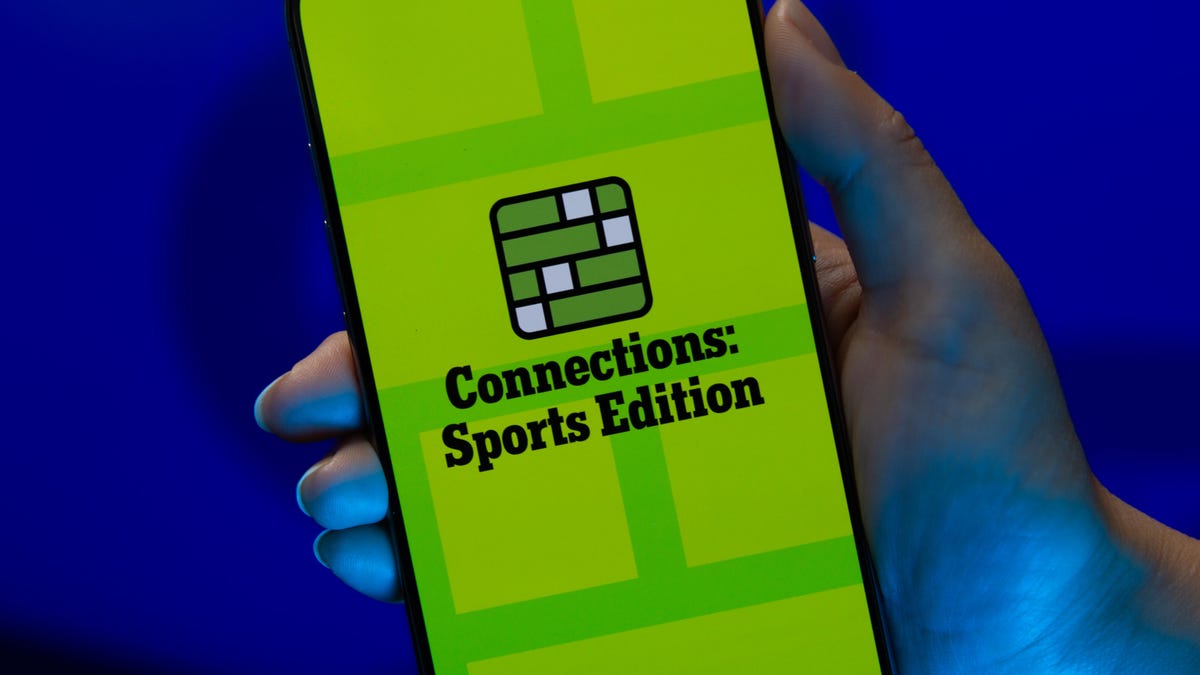Technologies
Sunderfolk Hands-On: A Cozy Co-Op RPG Streaming Tabletop Magic Into Everyone’s Home
Four friends, four phones, one video game. This is how you bring board game night into the digital age.

My party of adventurers walks into a spider-infested cave, and my friends and I start chatting strategy about the plan of attack for each of our heroes — then we leap into the fray by controlling the action through our phones.
This is Sunderfolk, a new roleplaying game and the debut title from studio Secret Door. Made by veterans from Blizzard, Riot Games and fantasy tabletop hits like Descent: Legends of the Dark, Sunderfolk brings board game nights to modern video games. It’s available for PC, PS5, Xbox Series X/S and Nintendo Switch for $50.
The game looks conventional enough, with up to four players choosing between six animal adventurers packing varying skills to protect their town. The game’s combat and action play out on a shared screen, but the novelty lies in each person pulling up their phone to move their character and look up battle info.
«[Sunderfolk] is built for folks who are already genre-lovers in this space who want to bring in folks who are not genre lovers,» said game director Erin Marek. The game was designed to be intriguing to fantasy tabletop veterans, yet approachable to those put off by complex board games requiring deep dives in manuals.
To do that, the Secret Door team started with a concept of «TV DnD,» as the studio chief Chris Sigaty explained: «It’s like [Dungeons and Dragons] meets JackBox.» That’s the party game where everyone jumps in to play on their phones, and it aptly describes the mediums Sunderfolk attempts to blend. The team wanted to bring the camaraderie of the couch to digital games, all set in an evocative fantasy world.
While Secret Door was kind enough to invite me into a Discord to connect with other players, I knew I had to experience this game with my own tabletop group. My dice-rolling battle-hardened cadre of thirtysomethings has tackled campaigns in RPG systems like Dungeon World, The Sprawl, Blades in the Dark, A Quiet Year, and Stonetop — all of which eschew the staid elements of Dungeons and Dragons in favor of more streamlined approaches to role-playing. That made them great sample players for Sunderfolk.
I attempted to get a game going in-person, but like every classic RPG campaign, we faced the greatest tabletop villain of all: scheduling. Nobody could find the same night to meet. Yet Sunderfolk’s setup allows everyone to play remotely: We just logged into the game on our phones sitting in our respective homes while all watching the same screen.
This is also the genius of Sunderfolk: All players share one big screen. At any time, players can treat their phone screen as a thumb pad to move their cursor around to look up enemy details or battlefield features (like healing shrines or exploding rocks). But it also lets players point and gesture around the map to plan and coordinate moves. We may have been sitting in our respective homes dozens of miles apart, but it felt like my friends and I were gathered around a table in person.
Streaming Sunderfolk to the whole party
But since my party wasn’t in the same place, I used a clever workaround, running the game on PS5 and streaming it through our friend group’s Discord, which everyone tuned into.
Admittedly, this was a bit challenging on the PS5, which doesn’t let you stream to Discord natively from the console — instead, I had to use a workaround I found online to use the Remote Play app to run my PS5 on my PC, and then stream that window through Discord. Complicated! There are alternatives, like streaming to YouTube or Twitch, but those require extra steps before you start broadcasting to the masses. Note that Xbox Series X lets you stream directly to Discord, and PC players will be just fine.
This shows a bit of the double-edged nature of Sunderfolk’s unique setup, but at least the trouble was on my end, and my friends didn’t need to download extra copies of the game — one copy will work for a whole party. All they had to do was download the free Sunderfolk app, watch my stream, scan the QR code on screen with their phone to log into the campaign, and we were off to the races.
How Sunderfolk’s phone-controlled RPG plays out
Once logged in to our campaign, three friends and I chose our quartet of characters from the six animal hero choices — and gave them silly names, as is tabletop tradition. One friend picked the barbarian polar bear (named Bearzerker), another the lamb ranger (Big Lamb), a third the raven spellcaster (RavnAbtMagic), and I picked the bat bard (Bat Stevens).
Like any good tabletop RPG, the campaign opens up in a tavern. Here we learned basic mechanics and ran through our early move selections, which differed for each character, before spilling out into a proper brawl outside. The local ogres had descended on the town to raid and pillage, but our brave heroes fended them off.
Though fights feel familiar for fantasy RPGs, like using different attacks to whittle down enemies, Sunderfolk has a heavy emphasis on moving around the battlefield. Our spellcaster teleported around (and likewise ‘ported enemies hither and thither), while I used my bat bard to swap places and drop power-ups around the area, encouraging different playstyles while never staying put.
That all led to The Moment. If you’ve ever played a tabletop RPG, you’ll probably remember the first time it became suddenly clear that you could do anything. When you tried something so spectacular that, succeed or fail, it was vividly memorable. In Sunderfolk, our next encounter had us chasing the ogres onto a bridge — and one by one, each party member found an attack or movement ability that let us shove our foes off the edges.
«What we’re stealing a little bit from tabletop games is those moments where something that should never have happened, happened,» Marek said. «You have that moment, that storytelling with your friends that you carry through with you and try to explain it to other people, and they don’t get it because they weren’t there.»
There are things we couldn’t do that a regular tabletop game would’ve allowed, like trying to talk to the ogres or bribing them to leave. Sunderfolk trades that in for fewer but still potent possibilities — just ask my party of thirtysomething men, gleefully cheering each other to boot enemies into the wild blue yonder — and the streamlined system with codified rules that a video game enables. From personal experience, it is a joy to have the game handle all the monsters, quest progression and more, meaning our regular dungeon master could join in, too.
As we wrapped up our first adventure, we chatted with townsfolk and grew relationships, did a little shopping and unlocked new abilities — standard RPG stuff, all wrapped up in a 2-hour session, which I later learned was the target time the Secret Door team set for a night of adventuring (quests take about an hour, and every two quests should result in a level-up awarding new skills). While I had a good time with the game, I was impressed that everything worked smoothly — even though I’d never used my phone to play a game this way.
Designing a new way to play old games
Sunderfolk’s team is full of people who have taken games from other platforms and mediums to adapt to play on the humble smartphone. Before joining Secret Door, Marek worked on Wild Rift (League of Legends on phones) while Sigaty worked on Hearthstone (a digital card game on PC and phones). Kara Centell-Dunk, Sunderfolk’s campaign designer, has over a decade of experience making tabletop games — including working on Descent: Legends in the Dark and Lord of the Rings: Journeys in Middle-earth, which have smartphone app assistants to help with play.
On an interview call with the three Secret Door creators above, only the fourth hadn’t worked in the intersection between phones and tabletop — Daren Bader, art director at Secret Door, who didn’t play Dungeons and Dragons or tabletop at all despite submitting fantasy art for Monster Manuals and Magic: The Gathering cards. «I was kind of the perfect guinea pig for the team,» Bader explained, as someone who would need to be dragged into the game. His conversion into a tabletop gamer during Sunderfolk’s development is a proof of concept.
«My favorite thing is that we created a game that I want to play, to tell you the honest truth,» Bader said.
Designing a game that would be «TV DnD» as Sigaty described was a process. Gamers don’t look down at their controller or mouse and keyboard while playing, but Sunderfolk would have lots of essential information on the phone app — what the team found was that players were staring at their phones instead of the action on the screen. The solution lay in another TV implement.
«One of our UX/UI designers, Hasiba Arshad, was actually looking at Apple TV remotes and how they use their paradigm … and she came up with this idea of what if you’re actually controlling a cursor?» Marek said — almost like drawing with a drawing pad.
It took years of evolution and lots of playtests with friends and family to get the controls just right (even in release form, the app on the phone tells players to look up when important gameplay is happening on the main screen). Other parts of the design took time to refine, like having each move arrayed in a row for players to tap and swipe between, like they’re holding a hand of cards — and then swiping the one they want upward to start their turn, like a sort of skeuomorphic motion.
All of this work would amount to a novel proof of concept if the game weren’t fun to play, but it is. It’s not the most complex RPG to start, but it’s designed to ramp up — as Centell-Dunk explained, the game’s philosophy is simple parts that, when combined, become complex. So those spiders I found lurched over merchant loot that scatter when I hit them? That can be combined with other movement abilities to get the tactical advantage.
As my friends and I wrapped up our second session, having delved in the vibrant underground worlds Bader designed — full of light and mushrooms, friendly animals and vicious ogres — we called it a night. But not before my tabletop-tested friends gave it their seal of approval by asking when we’d play the game next.
Ahead of us was the thing Centell-Dunk was most proud of: boss fights, and the systems she made for them.
«I hope players also enjoy being crushed by our bosses,» Centell-Dunk said.
Technologies
Today’s NYT Mini Crossword Answers for Friday, Dec. 26
Here are the answers for The New York Times Mini Crossword for Dec. 26.

Looking for the most recent Mini Crossword answer? Click here for today’s Mini Crossword hints, as well as our daily answers and hints for The New York Times Wordle, Strands, Connections and Connections: Sports Edition puzzles.
Need some help with today’s Mini Crossword? Some of the clues are tough today — I thought maybe 1-Across was referring to the Grinch, or even Oscar the Grouch, but was I ever wrong! Read on for all the answers. And if you could use some hints and guidance for daily solving, check out our Mini Crossword tips.
If you’re looking for today’s Wordle, Connections, Connections: Sports Edition and Strands answers, you can visit CNET’s NYT puzzle hints page.
Read more: Tips and Tricks for Solving The New York Times Mini Crossword
Let’s get to those Mini Crossword clues and answers.
Mini across clues and answers
1A clue: Furry and green, say
Answer: MOSSY
6A clue: State known for its potatoes
Answer: IDAHO
7A clue: Like a faithful friend
Answer: LOYAL
8A clue: Had a beverage
Answer: DRANK
9A clue: Pronoun frequently paired with «her»
Answer: SHE
Mini down clues and answers
1D clue: Not spicy, as salsa
Answer: MILD
2D clue: Reasons for wrinkled noses
Answer: ODORS
3D clue: Words from a doctor checking your tonsils
Answer: SAYAH
4D clue: Comedian Gillis
Answer: SHANE
5D clue: Part of an egg used to make hollandaise sauce
Answer: YOLK
Don’t miss any of our unbiased tech content and lab-based reviews. Add CNET as a preferred Google source.
Technologies
Today’s NYT Connections: Sports Edition Hints and Answers for Dec. 26, #459
Here are hints and the answers for the NYT Connections: Sports Edition puzzle for Dec. 26, No. 459.

Looking for the most recent regular Connections answers? Click here for today’s Connections hints, as well as our daily answers and hints for The New York Times Mini Crossword, Wordle and Strands puzzles.
Today’s Connections: Sports Edition is a tough one. That purple category once again has players looking for a different, but related, hidden word in four of the clues. If you’re struggling with today’s puzzle but still want to solve it, read on for hints and the answers.
Connections: Sports Edition is published by The Athletic, the subscription-based sports journalism site owned by The Times. It doesn’t appear in the NYT Games app, but it does in The Athletic’s own app. Or you can play it for free online.
Read more: NYT Connections: Sports Edition Puzzle Comes Out of Beta
Hints for today’s Connections: Sports Edition groups
Here are four hints for the groupings in today’s Connections: Sports Edition puzzle, ranked from the easiest yellow group to the tough (and sometimes bizarre) purple group.
Yellow group hint: Big Apple jock.
Green group hint: College football fun.
Blue group hint: On the road.
Purple group hint: Hunt down a word in other words.
Answers for today’s Connections: Sports Edition groups
Yellow group: A New York athlete.
Green group: Bowl games.
Blue group: Associated with a team road trip.
Purple group: Ends in a movement verb.
Read more: Wordle Cheat Sheet: Here Are the Most Popular Letters Used in English Words
What are today’s Connections: Sports Edition answers?
The yellow words in today’s Connections
The theme is a New York athlete. The four answers are Islander, Net, Ranger and Yankee.
The green words in today’s Connections
The theme is bowl games. The four answers are Alamo, Gator, Liberty and Pinstripe.
The blue words in today’s Connections
The theme is associated with a team road trip. The four answers are bus, flight, hotel and visiting locker room.
The purple words in today’s Connections
The theme is ends in a movement verb. The four answers are foxtrot (trot), newsprint (sprint), terrace (race) and thunderbolt (bolt).
Don’t miss any of our unbiased tech content and lab-based reviews. Add CNET as a preferred Google source.
Technologies
Today’s NYT Connections Hints, Answers and Help for Dec. 26, #929
Here are some hints and the answers for the NYT Connections puzzle for Dec. 26 #929

Looking for the most recent Connections answers? Click here for today’s Connections hints, as well as our daily answers and hints for The New York Times Mini Crossword, Wordle, Connections: Sports Edition and Strands puzzles.
Today’s NYT Connections puzzle is full of fun pop-culture references. Read on for clues and today’s Connections answers.
The Times has a Connections Bot, like the one for Wordle. Go there after you play to receive a numeric score and to have the program analyze your answers. Players who are registered with the Times Games section can now nerd out by following their progress, including the number of puzzles completed, win rate, number of times they nabbed a perfect score and their win streak.
Read more: Hints, Tips and Strategies to Help You Win at NYT Connections Every Time
Hints for today’s Connections groups
Here are four hints for the groupings in today’s Connections puzzle, ranked from the easiest yellow group to the tough (and sometimes bizarre) purple group.
Yellow group hint: Golden state cliches.
Green group hint: Funny films.
Blue group hint: Rock on.
Purple group hint: Not white.
Answers for today’s Connections groups
Yellow group: California-based character tropes.
Green group: Comedy subgenres.
Blue group: ’70s rock bands.
Purple group: Black ____.
Read more: Wordle Cheat Sheet: Here Are the Most Popular Letters Used in English Words
What are today’s Connections answers?
The yellow words in today’s Connections
The theme is California-based character tropes. The four answers are movie exec, surfer, tech bro and Valley Girl.
The green words in today’s Connections
The theme is comedy subgenres. The four answers are buddy, cringe, screwball and stoner.
The blue words in today’s Connections
The theme is ’70s rock bands. The four answers are America, Chicago, Foreigner and Journey.
The purple words in today’s Connections
The theme is black ____. The four answers are Forest, Friday, Panther and Widow.
Don’t miss any of our unbiased tech content and lab-based reviews. Add CNET as a preferred Google source.
-

 Technologies3 года ago
Technologies3 года agoTech Companies Need to Be Held Accountable for Security, Experts Say
-

 Technologies3 года ago
Technologies3 года agoBest Handheld Game Console in 2023
-

 Technologies3 года ago
Technologies3 года agoTighten Up Your VR Game With the Best Head Straps for Quest 2
-

 Technologies4 года ago
Technologies4 года agoBlack Friday 2021: The best deals on TVs, headphones, kitchenware, and more
-

 Technologies4 года ago
Technologies4 года agoVerum, Wickr and Threema: next generation secured messengers
-

 Technologies4 года ago
Technologies4 года agoGoogle to require vaccinations as Silicon Valley rethinks return-to-office policies
-

 Technologies4 года ago
Technologies4 года agoOlivia Harlan Dekker for Verum Messenger
-

 Technologies4 года ago
Technologies4 года agoiPhone 13 event: How to watch Apple’s big announcement tomorrow
